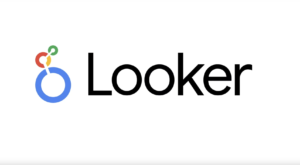Introduction: What are Marketing Dashboards?
Marketing dashboards are powerful tools that provide businesses with a visual representation of their marketing data. They allow marketers to track and analyze key metrics in real-time, providing valuable insights into the effectiveness of their marketing efforts. A marketing dashboard typically consists of various charts, graphs, and tables that display data from different sources, such as website analytics, social media platforms, email marketing campaigns, and more.
In today’s fast-paced business landscape, marketing dashboards have become essential for businesses of all sizes. They provide a centralized location for marketers to monitor and measure the success of their marketing campaigns, allowing them to make data-driven decisions and optimize their strategies. With the increasing amount of data available to businesses, marketing dashboards help simplify the process of analyzing and interpreting this data, enabling marketers to quickly identify trends, patterns, and areas for improvement.
The Importance of Data in Marketing
Data plays a crucial role in making informed marketing decisions. It provides valuable insights into customer behavior, preferences, and trends, allowing marketers to tailor their strategies to meet the needs of their target audience. By analyzing data, marketers can identify which marketing channels are most effective, which campaigns are generating the highest return on investment (ROI), and which customer segments are most profitable.
However, managing and analyzing marketing data can be challenging. With the vast amount of data available from various sources, it can be overwhelming for marketers to manually collect and analyze this information. This is where marketing dashboards come in. They automate the process of collecting and organizing data from different sources, providing marketers with a comprehensive view of their marketing performance.
How Marketing Dashboards Work
Marketing dashboards collect data from various sources and display it in a visually appealing and easy-to-understand format. They use APIs (Application Programming Interfaces) to connect with different platforms and pull data in real-time. This allows marketers to have up-to-date information at their fingertips, without the need to manually collect and input data.
There are different types of marketing dashboards available, depending on the specific needs of a business. Some dashboards focus on specific marketing channels, such as social media or email marketing, while others provide a holistic view of all marketing efforts. Additionally, some dashboards are designed for specific industries or business sizes, offering tailored features and metrics.
Key Metrics to Track in Marketing Dashboards
Marketing dashboards track a wide range of metrics, but there are some key metrics that every marketer should pay attention to. These metrics provide valuable insights into the effectiveness of marketing campaigns and help identify areas for improvement. Some of the most important metrics to track in marketing dashboards include:
1. Website Traffic: Tracking website traffic allows marketers to understand how many people are visiting their website and where they are coming from. This metric helps identify which marketing channels are driving the most traffic and which ones need improvement.
2. Conversion Rate: The conversion rate measures the percentage of website visitors who take a desired action, such as making a purchase or filling out a form. Tracking this metric helps marketers understand how effective their website is at converting visitors into customers.
3. Customer Acquisition Cost (CAC): CAC measures the cost of acquiring a new customer. By tracking this metric, marketers can determine how much they are spending on acquiring new customers and compare it to the lifetime value of those customers.
4. Return on Investment (ROI): ROI measures the profitability of marketing campaigns by comparing the revenue generated to the cost of running those campaigns. Tracking ROI helps marketers understand which campaigns are generating the highest return and allocate their budget accordingly.
Customizing Your Marketing Dashboard
One of the benefits of marketing dashboards is their ability to be customized to meet the specific needs of a business. By tailoring your dashboard to display the metrics that are most relevant to your goals and objectives, you can gain deeper insights into your marketing performance.
To customize your marketing dashboard, start by identifying the key metrics that align with your business objectives. For example, if your goal is to increase brand awareness, you may want to track metrics such as social media reach, website traffic, and engagement rates. On the other hand, if your goal is to generate leads, you may want to focus on metrics such as conversion rate, lead generation form submissions, and email open rates.
Once you have identified the key metrics, you can customize your dashboard by selecting the appropriate charts and graphs to display the data. Most marketing dashboards offer a variety of visualization options, such as line charts, bar graphs, and pie charts. Choose the visualizations that best represent the data and make it easy for you to interpret and analyze.
Integrating Marketing Dashboards with Other Tools
Marketing dashboards can be even more powerful when integrated with other marketing tools. By connecting your dashboard with tools such as Google Analytics, social media management platforms, and email marketing software, you can consolidate all your marketing data in one place and gain a comprehensive view of your marketing performance.
Integrating marketing dashboards with other tools allows for seamless data transfer and eliminates the need for manual data entry. For example, by integrating your dashboard with Google Analytics, you can automatically pull website traffic data into your dashboard without having to manually input it. This not only saves time but also ensures that your data is accurate and up-to-date.
Additionally, integrating marketing dashboards with other tools enables marketers to take action directly from the dashboard. For example, if you notice a decrease in website traffic from a specific marketing channel, you can quickly adjust your strategy or allocate more resources to that channel without having to switch between different platforms.
The Benefits of Using Marketing Dashboards
Using marketing dashboards offers several advantages for businesses:
1. Real-time insights: Marketing dashboards provide real-time data, allowing marketers to make informed decisions based on up-to-date information. This enables businesses to quickly identify trends, spot opportunities, and respond to changes in the market.
2. Improved efficiency: By automating the process of collecting and analyzing data, marketing dashboards save time and resources. Marketers no longer have to manually gather data from different sources or spend hours creating reports. Instead, they can focus on analyzing the data and taking action to improve their marketing strategies.
3. Enhanced collaboration: Marketing dashboards can be shared with team members and stakeholders, promoting collaboration and alignment across departments. By providing a centralized location for marketing data, dashboards ensure that everyone has access to the same information and can work together towards common goals.
4. Data-driven decision making: Marketing dashboards enable businesses to make data-driven decisions by providing insights into the effectiveness of marketing campaigns. By tracking key metrics and analyzing trends, marketers can identify what is working and what needs improvement, allowing them to optimize their strategies for better results.
Common Challenges with Marketing Dashboards and How to Overcome Them
While marketing dashboards offer numerous benefits, there are some common challenges that businesses may face when using them:
1. Data integration: Integrating data from different sources can be complex and time-consuming. Businesses may struggle with connecting their marketing tools to their dashboard or ensuring that the data is accurate and up-to-date. To overcome this challenge, it is important to choose a marketing dashboard that offers seamless integration with your existing tools and provides reliable data synchronization.
2. Data overload: With the abundance of data available, businesses may find it overwhelming to analyze and interpret the information displayed on their dashboard. To overcome this challenge, it is important to focus on the key metrics that align with your business objectives and filter out unnecessary data. Additionally, using visualizations such as charts and graphs can help simplify complex data and make it easier to understand.
3. Lack of expertise: Some businesses may lack the necessary expertise to effectively use marketing dashboards and analyze the data. To overcome this challenge, businesses can invest in training and education for their marketing teams or consider outsourcing the analysis to experts who specialize in data analytics.
Best Practices for Using Marketing Dashboards
To get the most out of your marketing dashboard, consider the following best practices:
1. Set clear goals: Before using a marketing dashboard, define your goals and objectives. This will help you identify the key metrics that are most relevant to your business and ensure that you are tracking the right data.
2. Regularly review and analyze data: Make it a habit to regularly review and analyze the data displayed on your dashboard. Look for trends, patterns, and areas for improvement, and use this information to optimize your marketing strategies.
3. Share insights with stakeholders: Use your marketing dashboard as a communication tool to share insights and progress with stakeholders. This promotes transparency and alignment across departments, ensuring that everyone is working towards common goals.
4. Stay up-to-date with new features and trends: Marketing dashboards are constantly evolving, with new features and trends emerging regularly. Stay up-to-date with the latest advancements in marketing dashboards to ensure that you are using the most effective tools and techniques.
Conclusion: The Future of Marketing Dashboards
Marketing dashboards have become an essential tool for businesses in today’s data-driven world. As technology continues to advance, marketing dashboards will evolve to provide even more powerful insights and capabilities. For example, artificial intelligence (AI) and machine learning algorithms can be integrated into marketing dashboards to provide predictive analytics and personalized recommendations.
To stay ahead of the competition, it is important for businesses to embrace marketing dashboards and leverage their full potential. By using these tools to track key metrics, make data-driven decisions, and optimize marketing strategies, businesses can gain a competitive edge and achieve their marketing goals.
If you’re looking for a comprehensive guide to CMO dashboards, Studio Insighters has got you covered. Their article, titled “CMO Dashboards: A Comprehensive Guide,” provides valuable insights into the definition and importance of marketing dashboards for Chief Marketing Officers. Whether you’re a seasoned marketer or just starting out, this article will help you understand how to effectively use dashboards to track and analyze your marketing efforts. Check it out here.







